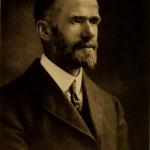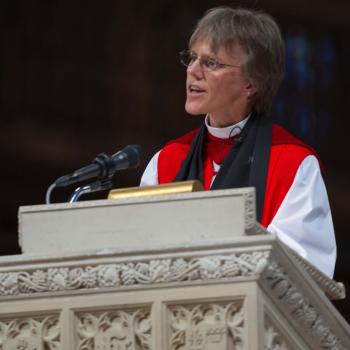My first run-in with postmodern literature was back in college. During my writing undergrad, I’d become familiar with the work of literary modernists like Virginia Woolf, James Joyce, and William Faulkner and eventually started testing postmodern waters. Cormac McCarthy was my first point of contact, and soon after Mark Z. Danielewski, Thomas Pynchon, and William Gaddis. The challenge many postmodern texts posed to me in reading them was alluring, and I started imitating their work in my own fiction writing. However, as my knowledge of Christian philosophy and apologetics matured, so did my understanding of the ideas behind postmodernism, namely its rejection of objective truth and beauty. If this is correct, then taken consistently, it would have a great impact not just on our religious beliefs and aesthetic sensibilities, but also on how we live our daily lives. So in this article, I want to explore postmodernism and its literary influence, along with whether or not it’s been truly as devastating as some have claimed.
What is Postmodernism?
Defining postmodernism is difficult due to the various conceptions of it which differ from field to field. In his analysis of postmodern literature, Brian McHale associates postmodernism more with an aesthetic or cultural tendency than a school of philosophical thought (McHale, The Cambridge Introduction to Postmodernism, 8). And there are legitimate reasons to believe this. For example, McHale identifies certain literary characteristics often associated with postmodern literature in texts as early as the 13th century. Namely, he finds critifiction, or writing about novel writing in a novel, in a Japanese novelist’s work from 1200. He also finds metafiction, or reflection on a text’s fictional status within the text itself, in Don Quixote, written between 1605 and 1615 and often considered the first modern novel (9, 10). Both are part of postmodern literature’s proclivity for self-reflexivity, or referencing one’s own artificiality or contrivance. Indeed, McHale convincingly traces postmodern literary characteristics down through the ages (10). It’s evident, then, that postmodern literature at least borrows from universal writing practices and sensibilities.
Even so, I don’t think McHale’s conception fully captures postmodernism’s ideas. For one thing, it would be a mistake to identify postmodernism with these preexisting characteristics since they’re not part of a cohesive philosophy or historical period, which postmodernism is taken by philosophers and historians to be. For another, just because postmodernism’s manifested in cultural and aesthetic tendencies, it doesn’t mean that there aren’t underlying assumptions or ideas governing those proclivities. Therefore, I’m more inclined to adopt the definition of postmodernism articulated by philosophers William Lane Craig and J. P. Moreland as both a historical, chronological notion and a philosophical ideology (Craig and Moreland, Philosophical Foundations for a Christian Worldview, 132). Specifically, postmodernism is a school of thought following and reacting to modernity, or the period of European thought which developed from the Renaissance in the 14th-17th centuries and carried on into the 19th century (Ibid.).
So understood, there are four core tenets to postmodernism which I believe directly or indirectly affect postmodern literature.
1. Reality is a social construction.
To the postmodernist, language creates reality, so what’s real for one linguistic group may be different for another. So, for example, God exists relative to Christians but doesn’t relative to atheists. Moreover, postmodernists understand the laws of logic as Western constructions. Thus, they aren’t universally valid (Ibid.).
2. There is no objective truth.
Postmodernists understand truth as relative to linguistic communities which share the same narrative. Thus, all thought is historically and socially conditioned. Knowledge, then, is a construction of one’s linguistic structures instead of a true representation of reality by one’s mental states (133-134).
3. There is no authorial meaning to texts.
Since objective truth can’t be reached, authors don’t have access to the meaning of their own texts. Rather, the meaning of a text is created by a community of readers who share the same interpretation of the text. So there’s no such thing as a Gospel of John, but instead, there’s a Catholic, Coptic, and Protestant Gospel of John (135).
4. There are no metanarratives.
Metanarratives are worldviews which give a framework for interpreting reality. For example, the Christian metanarrative says that Christ died to save the world from sin and we as His followers wait for His return to redeem creation. This gives us purpose as we endure the trials of everyday life. To the postmodernist, however, there are no metanarratives, meaning there’s no way to decide whether competing worldviews are true. The only metanarratives are local ones (136).
Effects on Literature and Readers
While all this paints a dire picture of postmodernism’s effect, I actually think it’s contributed positively to literature in some ways. For example, it’s championed experimentation with literary forms. Cormac McCarthy eschewed grammatical conventions like quotation marks and commas in favor of a style akin to the King James Bible, and Mark Z. Danielewksi used different fonts and typesets in conjunction with different narrative perspectives in his seminal novel House of Leaves. Other authors like Gaddis and Pynchon pushed the limits of literary convention as well. All this to say, there’s a healthy ambition to postmodern writers.
However, the through line for most seminal postmodern texts like McCarthy’s Blood Meridian, Pynchon’s The Crying of Lot 49, Kurt Vonnegut’s Slaughterhouse-Five, and others is a pervasive sense of nihilism. (For those who haven’t read the books yet, this is your spoiler warning.) Blood Meridian largely substitutes plot for tone and setting, and the backdrop of a lawless Western frontier paired with McCarthy’s horrifically magnificent prose creates a purposefully oppressive tone throughout the narrative. The Crying of Lot 49 really has no ending; as McHale puts it, “the novel simply stops, as if it had somehow stalled out right at the crucial moment. . . . Pynchon’s heroine is left suspended, stranded high and dry — as is the reader” (McHale, 25). Whatever Pynchon’s motives were for the lack of resolution in the story, it undermines the task of fiction — to help us make sense of reality by imposing order on events through the structure of narrative –, contributing to a sense of purposelessness. Finally, Slaughterhouse-Five utilizes several literary techniques like unreliable narration and a nonlinear narrative to disorient the reader. This, along with the mantra “So it goes” repeated each time a character dies (a frequent occurrence), reinforces a tone and narrative which embraces nihilism.
And this is no accident; indeed, this is taking postmodern philosophy as described above to its logical ends. If there is no objective truth, then there’s no place for objective beauty either, and so the artistic task of mirroring beauty is either purposefully or inadvertently undermined.
I think this points to the inherent problem with postmodernism: it’s great at pointing out the problems with modernism and other literary schools and philosophies preceding it, but it’s primarily a rejection of ideas, not a set of ideas in itself. Postmodernism rejects truth, objective rationality, authorial meaning, and universally valid linguistic definitions (Craig and Moreland, 132). In short, postmodernism doesn’t assert any new ideas; it just attacks preexisting ones. Without some positive ideological framework, how are any works of literature supposed to stand? What can we glean from them except despair in the wake of our aimlessness? Moreover, how are literary works to be judged objectively against postmodernism’s rejection of objective standards for beauty? In other words, how are we to say these seminal postmodern texts like Blood Meridian and Slaughterhouse-Five possess more literary merit than others which are typically considered lower-brow, like Harlequin romance novels? Postmodernism asserts that we don’t know, and it doesn’t know either. It’s an incoherent and confused ideology.

Beyond Postmodernism
There are several emerging schools of thought attempting to identify the current cultural and artistic moment since postmodernism is largely considered to be over (see McHale, 5). One of the more popular is metamodernism. It’s difficult to define, but it’s characterized by an “informed naivety, a pragmatic idealism” (Timotheus Vermeulen and Robin van den Akker, “Notes on metamodernism,” Journal of Aesthetics and Culture, 2010). I won’t be able to fully cover it here for the sake of time, but suffice it to say that it will ultimately fail in its attempts to carry art beyond anything more than fleeting emotional resonance because it’s really nothing more than an iteration of postmodernism. Timotheus Vermeulen and Robin van den Akker, the cultural theorists who popularized it, write that “Metamodernism moves for the sake of moving, attempts in spite of its inevitable failure; it seeks forever for a truth that it never expects to find” (Ibid.). By its proponents’ own admission, metamodernism is doomed because it relies on postmodern interpretations of truth, namely that there is no objective truth. Really it amounts to nothing more than another noble lie: we bide our time and laugh at the jesters as we wait for the edifice to fall.
Nothing will change in our art or culture until we accept the fact that postmodernism is a failed enterprise and reject its influence at every level. The nihilism postmodernism promotes is ultimately unsustainable if followed consistently, not just artistically but culturally. And this was acknowledged by postmodernism’s forebears: Nietzsche’s oft-cited “Parable of the Madman” from The Gay Science predicted the cultural aimlessness the West now finds itself in after embracing secularism. But Nietzsche’s pessimism and postmodernism both existed before the revolution in Christian philosophy begun in the 1960’s, spearheaded largely by Alvin Plantinga.
We now have positive and, I think, persuasive arguments for the existence of God, and therefore of objective truth and beauty. So what’s stopping us from assessing these arguments? What’s stopping us from accepting the Church’s past abuses of power and holding ourselves accountable in leading the culture — and, consequently, its art — toward truth, goodness, and beauty? And to my brothers and sisters in Christ, why should we insulate ourselves in an artistic Christian subculture which contents itself with didactic, subpar storytelling, sappy devotionals masquerading as poetry, and saccharine worship songs, never attempting transcendence? We share the same wreckage; let’s rebuild together.
image: joshua-fuller-_I5DYcYuo6c-unsplash-2













